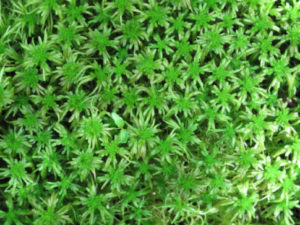As I mentioned in my previous post, mosses are very sensitive to changes in microclimate. Forestry practices can, therefore, have a big impact on moss diversity and persistence in any one location. Over the last few years we’ve gotten a better sense of the scale at which those management decisions affect local mosses. Researchers in Sweden found that clear-cutting in boreal forest could extirpate mosses from an area for more than 50 years (Dynesius and Hylander 2007). Since forests may be managed on rotation of ~100 years, this means that the forest could be halfway to the next clear-cut by the time the bryophyte community is similar to what it was before the cut, which could be a problem for maintaining relationships within the ecosystem. A later study in Sweden found that red-list mosses and mosses that were indicators of areas with species richness were correlated with the bark area of individual trees, which may explain why tree age is so important to moss diversity in these forests (Fritz et al. 2009). These studies together suggest that perhaps some areas should be left as refuges for those moss species that are particularly sensitive to the disruption of clear-cutting.
We also know now that there are certain forests and other habitats which are hot spots for moss diversity, so we can be more considered in our decisions that impact them. A survey of endemic mosses found that islands with mountains and the Andes were particularly important in terms of native species (Hallingback and Tan 2014), and research within the Madeiras found that mosses in high mountain habitats were at increased risk (Sim-Sim et al. 2014). So we know that we should be paying attention to mosses in a variety of locations, not just boreal forests.
It’s good to know that we can do things to support moss populations in their current spots, but what about those mosses that have already seen their ranges shrink dramatically- can we do anything about that? As it turns out, yes. The results of two separate studies suggest that we can help mosses reclaim some of the land they have lost. Rowntree et al. (2011) found that we can raise moss plants in locations such as greenhouses and labs with success, although we need to pay attention to temperature and it’s easier to work with the sporophyte generation. Combine that with the results of Malson & Rydin (2007) who found that they could transplant moss fragments into fens that had been previously drained but were now re-flooded, and we do have options for raising moss plants in captivity and then planting them in appropriate wild habitats when they become available.
But not everyone has a drained fen to restore or a forest to manage- what can we, as people concerned about moss conservation, do if we don’t have either? In my final post, I’ll look into options for getting involved in moss conservation at multiple levels.
Works Cited:
Dynesius, M., and K. Hylander. 2007. Resilience of bryophyte communities to clear-cutting of boreal stream-side forests. Biological Conservation 135:423–434. The Conservation Ecology of Cryptogams.
Fritz, Ö., M. Niklasson, and M. Churski. 2009. Tree Age Is a Key Factor for the Conservation of Epiphytic Lichens and Bryophytes in Beech Forests. Applied Vegetation Science 12:93–106.
Hallingback, T., and B.C. Tan. 2014. Past and present activities and future strategy of bryophyte conservation. Phytotaxa 9:266–274.
Mälson, K., and H. Rydin. 2007. The regeneration capabilities of bryophytes for rich fen restoration. Biological Conservation 135:435–442. The Conservation Ecology of Cryptogams.
Rowntree, J.K., S. Pressel, M.M. Ramsay, A. Sabovljevic, and M. Sabovljevic. 2011. “In vitro” conservation of European bryophytes. In Vitro Cellular & Developmental Biology. Plant 47:55–64.
Sim-Sim, M., S. Ruas, S. Fontinha, L. Hedenäs, C. Sérgio, and C. Lobo. 2014. Bryophyte conservation on a North Atlantic hotspot: threatened bryophytes in Madeira and Selvagens Archipelagos (Portugal). Systematics and Biodiversity 12:315–330.

